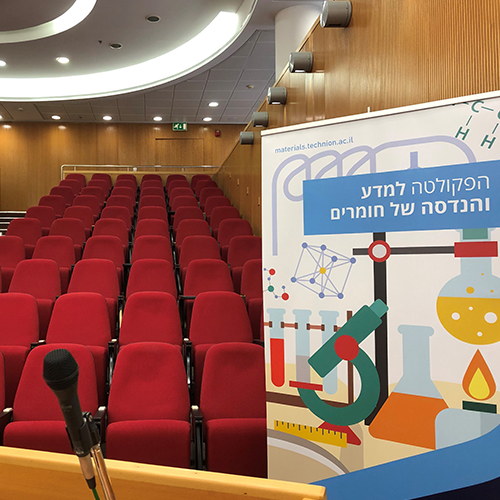
11/01/2026
David Wang Auditorium, 3rd floor, Dalia Maydan Bldg.
Mr. Aviv Marom – MSc candidate
Department of Materials Science and Engineering
Technion – Israel Institute of Technology, Haifa
Many applications of gold nanoparticles are related to local surface plasmon resonance and enhancement of electromagnetic field. The combination of nanopatterning with subsequent solid-state dewetting can narrow the size distribution and cause an ordered arrangement of metallic nanoparticles, thus enhancing their optical properties.
In this study, we fabricate grating and nanohole structures in thin polycrystalline Au films deposited on sapphire substrate using electron-beam lithography and lift-off method. The structures were subsequently annealed for different times which resulted in intermediate and complete dewetting. A significant decrease of the average particle size and narrowing of the particle size distribution compared to a blank film was observed after complete dewetting, while the dewetted lines maintained high stability manifested by the large distance between the particles.
At the intermediate dewetting stage of the grating structure, an unusual “abacus” structure consisting of many elongated particles attached to the patterned lines with “bamboo” microstructure was formed. In the case of nanohole structure, some particles that formed during dewetting were surprisingly located at the sites of initial holes. We suggested two models to explain these counter-intuitive phenomena based on mean chemical potential approximation developed by W.C. Carter and co-workers. Our research contributes to the understanding of dewetting phenomena and offers insights into the formation of novel nanostructures.
BIO
B.Sc in Material Science and Engineering Graduate from the Technion


